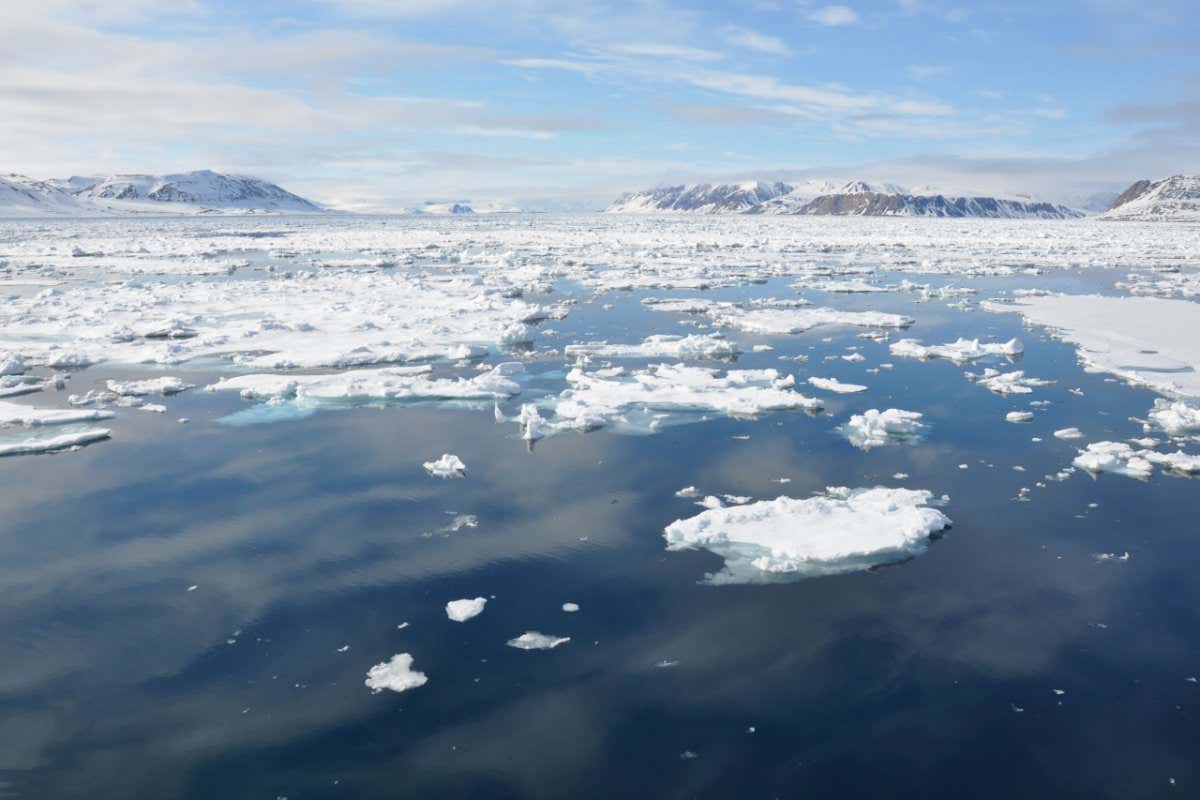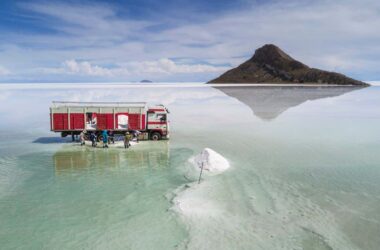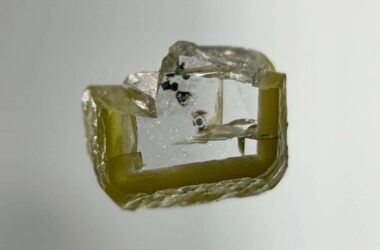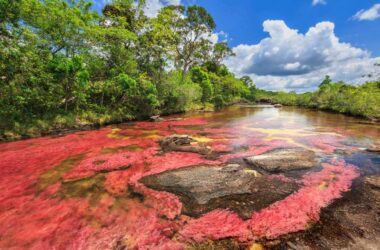Icy waters around the coast of Spitsbergen, Svalbard, in the Arctic Ocean
Stuart Melvin/Alamy
The western Arctic Ocean is acidifying at a rate four times faster than other oceans due to the rapid melting of ice.
Ocean acidification occurs when seawater absorbs carbon dioxide from the atmosphere. Since the industrial revolution, atmospheric CO2 has been increasing, resulting in oceans becoming 30 per cent more acidic on average. This has had widespread consequences for marine ecosystems.
According to Wei-Jun Cai from the University of Delaware, in most ocean basins, the rate of ocean acidification has closely followed the increasing levels of atmospheric CO2. However, the Arctic Ocean, which is cold and covered in ice during winter, behaves differently.
To better understand this difference, Cai and his colleagues analyzed data collected from 47 expeditions to the Arctic between 1994 and 2020. They examined pH levels and the saturation of the mineral aragonite, which affects the ability of organisms like coral and oysters to build shells. Lower levels of both measures indicate higher levels of acidification.
Their findings showed that pH levels decreased four times faster in the western Arctic compared to other oceans during the same period. Aragonite saturation also decreased three times faster. The area of the Arctic Ocean with low pH and low aragonite has grown from almost non-existent in 1990 to about 7 per cent of the entire Arctic Ocean in 2020.
According to Hongjie Wang from the University of Rhode Island, this changing chemistry can impact numerous aspects, from plankton to whales that feed on them. Arctic ecosystems are particularly sensitive to acidification, although the specific effects compared to other changes like warming are not yet clear.
This study did not consider the eastern Arctic, which is controlled by Russia and has less available data, as mentioned by Jens Terhaar from the Woods Hole Oceanographic Institution in Massachusetts.
According to Cai’s group, the accelerated rate of acidification is attributed to the melting ice. Melting sea ice exposes seawater to the air, causing it to absorb more CO2. Additionally, meltwater dilutes compounds that buffer absorbed CO2 and reduces mixing between the surface and deep ocean. As long as there is summer ice melting, the boosted acidification is expected to continue.
Terhaar also believes that disappearing sea ice is responsible for the higher rate of acidification, although other factors could be involved. For example, in the eastern Arctic, the influence of rivers flowing into the ocean from Siberia is likely significant.








